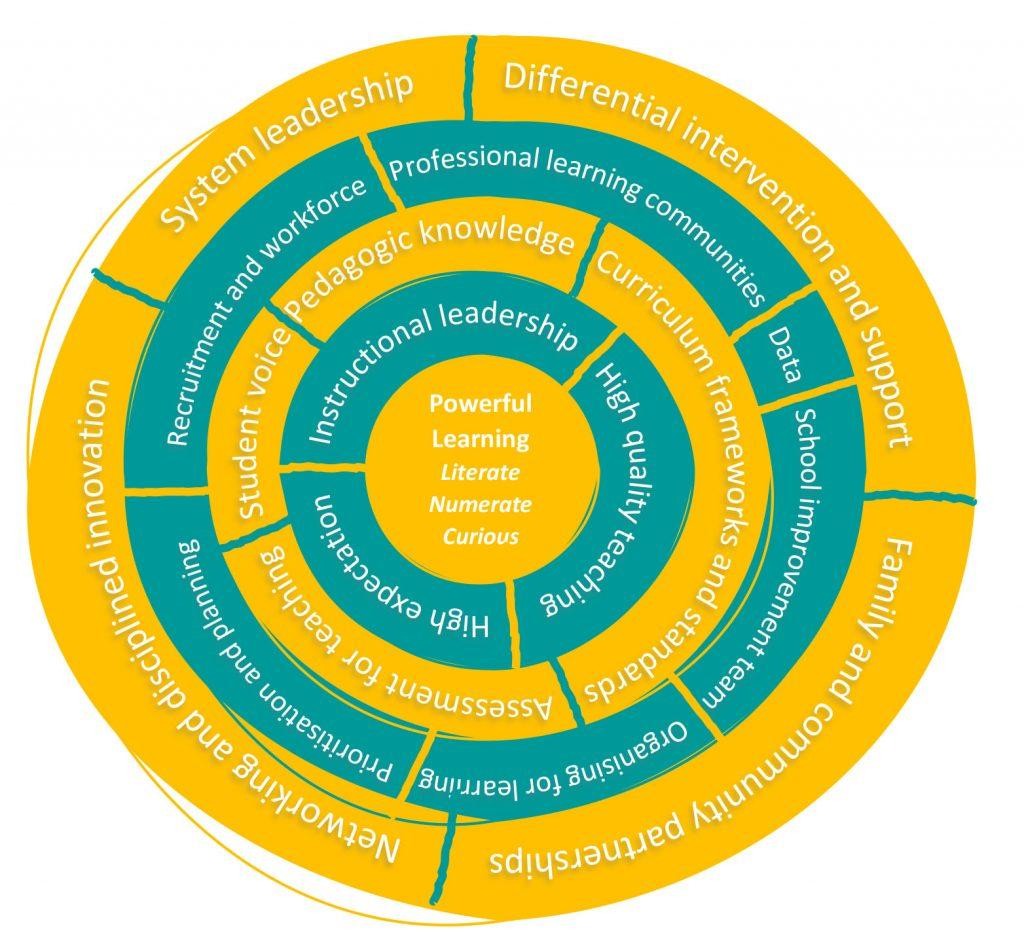School Improvement from the Inside Out
At the heart of our vision for education is a self-improving school-led system which has the best evidence-led practice and in which every child is able to fulfil their potential.
Our strategic approach is built on a research-based understanding of what works to achieve rapid school improvement. Put simply, we focus on school improvement from the inside-out. Instead of doing outside-in better, or more efficiently, our academy leaders start from the centre of the circle and move outwards. Pupil learning is at the centre of everything we do.
At the heart of our vision for education is a self-improving school-led system which has the best evidence-led practice and in which every child is able to fulfil their potential.
Our strategic approach is built on a research-based understanding of what works to achieve rapid school improvement. Put simply, we focus on school improvement from the inside-out. Instead of doing outside-in better, or more efficiently, our academy leaders start from the centre of the circle and move outwards. Pupil learning is at the centre of everything we do.





